#stellar spectroscopy
Explore tagged Tumblr posts
Text
no matter how badly your day is going at least you're not my friend who, at 21 and about to finish his astrophysics major, just learned from me that the sun does not in fact rise in the west and set in the east but rather does so the other way around
#don't ask me why man#also a quote from him during our stellar spectroscopy observing: 'whoever named aldebaran should be shot'#and then after I told him it was an arabic name: 'oh. nevermind!'#thank you luke for your attempt at cultural sensitivity I guess
4 notes
·
View notes
Text
Webb Telescope Rules Out Thick Carbon Dioxide Atmosphere for TRAPPIST-1 c
NASA’s James Webb Space Telescope has conducted observations of the exoplanet TRAPPIST-1 c and made a significant discovery. Despite being similar in size to Venus and receiving comparable levels of radiation from its star, Webb’s findings indicate that TRAPPIST-1 c does not possess Venus’s thick carbon dioxide-rich atmosphere. If an atmosphere exists on TRAPPIST-1 c, it is likely to be very…
View On WordPress
#Ariane 5 rocket#Cosmic Microwave Background#Deep space observations#Exoplanets#Fine Guidance Sensor/Near InfraRed Imager and Slitless Spectrograph (FGS/NIRISS)#Galaxy formation#Hubble Space Telescope successor#Infrared Astronomy#Infrared detectors#James Webb Space Telescope (JWST)#Launch#Mid-Infrared Instrument (MIRI)#Mirror segments#Multi-object spectroscopy#NASA#Near InfraRed Spectrograph (NIRSpec)#Near-Infrared Camera (NIRCam)#Space telescope#Stellar populations#Sunshield#Transiting exoplanets#Universe formation and evolution#Webb Science Operations Center (JSOC)
0 notes
Text

The light of the planet TRAPPIST-1 b measured in two color reveals new insights on the planet’s nature
An international team of researchers has just published in Nature Astronomy a complete analysis of all the mid-infrared data collected on TRAPPIST-1 b, with the aim of determining whether this planet has an atmosphere
New TRAPPIST-1 observations with JWST underscore the complexities of confirming a planet's atmosphere using only broadband thermal emission data. This insight takes on added significance with the newly approved "Rocky Worlds" observation program by Space Telescope Science Institute (STScI) which plans to apply this very method to study numerous rocky exoplanets orbiting cool stars.
The James Webb Space Telescope (JWST) is revolutionizing the study of exoplanets (planets orbiting stars other than the Sun), notably by enabling detailed spectroscopic studies of small rocky planets, but only if they orbit nearby ‘red dwarfs’, the smallest, least massive and coldest stars. At the top of its list of targets is the very low-mass red dwarf TRAPPIST-1, whose astonishing system of seven rocky planets the size of Earth, including three located in the star's habitable zone, was discovered in 2017 by an international team led by ULiège astronomer Michaël Gillon.
The innermost planet, TRAPPIST-1 b, was recently observed in depth by JWST in the mid-infrared, a type of light to which our eyes are not sensitive. An international team of researchers has just published in Nature Astronomy a complete analysis of all the mid-infrared data collected on TRAPPIST-1 b, with the aim of determining whether this planet has an atmosphere. ‘Planets orbiting red dwarfs are our best chance of studying for the first time the atmospheres of temperate rocky planets, those that receive stellar fluxes between those of Mercury and Mars’, explains Elsa Ducrot, co-lead author of the study and assistant astronomer at the Commissariat aux Énergies Atomiques (CEA) in Paris, France. ‘The TRAPPIST-1 planets provide an ideal laboratory for this ground-breaking research.
A previous observation with JWST measured TRAPPIST-1 b's infrared emission at 15 microns and suggested that a thick, CO2-rich atmosphere was unlikely (Greene et al., 2023). This conclusion was based on the fact that CO2 strongly absorbs radiation at this wavelength, which would have significantly reduced the observed flux if such an atmosphere were present. The study proposed that the measurement was most consistent with a "dark bare rock" scenario— a planet without an atmosphere and a dark surface that absorbs nearly all incoming starlight. However, a single measurement at one wavelength was insufficient to rule out all potential atmospheric scenarios
In this new study, the authors expanded on this work by measuring the planet’s flux at another wavelength, 12.8 microns. They conducted a global analysis of all available JWST data and compared these observations with surface and atmospheric models to identify the scenario that best matches the data.
Emission to the rescue
The method most used to determine whether an exoplanet has an atmosphere - transit transmission spectroscopy - involves observing its ‘transits’, i.e. when it passes in front of its host star at different wavelengths and detecting and measuring the tiny fraction of the light emitted by the star in our direction that is absorbed by its atmosphere, which is an indicator of its chemical composition. ‘However, very low-mass red dwarfs pose a problem in this respect,’ explains Professor Michaël Gillon (ULiège), author of the study. ‘Their surface is not homogeneous, and this inhomogeneity can pollute the transmission spectrum of transiting planets and mimic atmospheric characteristics.’ Such a phenomenon has been observed on several occasions with the JWST during the observation of transits of planets around red dwarfs.
One solution to overcome this stellar contamination and still get information about the presence (or absence) of an atmosphere is to directly measure the planet's heat by observing a drop in flux as the planet passes behind the star (an event called occultation). By observing the star just before and during the occultation, we can deduce the amount of infrared light coming from the planet.
‘Emission quickly became the preferred method for studying rocky exoplanets around red dwarfs during the first two years of JWST,’ explains Pierre Lagage, co-lead author of the study and head of the astrophysics department at the Commissariat aux Énergies Atomiques (CEA) in Paris, France. ‘For the TRAPPIST-1 planets, the first information comes from emission measurements, because it is still difficult to disentangle the atmospheric and stellar signals in the transit.
Reflecting this growing interest, the Space Telescope Science Institute (STScI), that manages JWST operations, recently approved a 500 hours Director Discretionary Time (DDT) program called ‘Rocky Worlds‘ to investigate the atmospheres of terrestrial exoplanets around nearby M-dwarf stars using exactly the same approach as the authors, via occultation observations, but at 15 microns only.
The results of the study are not very consistent with the ‘dark, bare surface’ scenario suggested by Greene et al. 2023. The authors found that a not-so-grey bare surface composed of ultramafic rocks (volcanic rocks enriched in minerals) better explained the data.
Alternatively, they were able to show that an atmosphere with a large amount of CO2 and haze could also explain the observations. This was a surprising result, since a CO2-rich atmosphere seemed incompatible with the strong emission at 15 microns. However, haze can radically change the situation: it can effectively absorb starlight and make the upper atmosphere warmer than the lower layers, creating what is known as a ‘thermal inversion’, like the Earth's stratosphere. This inversion causes the CO₂ to emit light rather than absorb it, resulting in a higher flux at 15 microns than at 12.8 microns.
“These thermal inversions are quite common in the atmospheres of Solar system bodies, perhaps the most similar example being the hazy atmosphere of Saturn's moon Titan. Yet, the chemistry in the atmosphere of TRAPPIST-1b is expected to be very different from Titan or any of the Solar system's rocky bodies and it is fascinating to think we might be looking at a type of atmosphere we have never seen before” explains Dr. Michiel Min from SRON Netherlands Institute for Space Research.
The authors note, however, that this atmospheric model, while consistent with the data, remains less likely than the bare rock scenario. Its complexity and the questions relating to haze formation and long-term climate stability on TRAPPIST-1 b make it a difficult model to implement. Future research, including advanced 3D modelling, will be needed to explore these issues. More generally, the team stresses the difficulty of determining with certainty a planet's surface or atmospheric composition using only emission measurements in a few wavelengths, while highlighting two convincing scenarios that will be explored in greater detail with the next observations of TRAPPIST-1 b.
What’s next?
‘Although both scenarios remain viable, our recent observations of TRAPPIST-1 b's phase curve - which tracks the flow of the planet throughout its orbit - will help to solve the mystery’, says Professor Michaël Gillon, who co-directs the new JWST program with Dr Elsa Ducrot. She adds: ‘By analyzing the efficiency with which heat is redistributed on the planet, astronomers can deduce the presence of an atmosphere. If an atmosphere exists, the heat should be distributed from the day side of the planet to its night side; without an atmosphere, the redistribution of heat would be minimal."
So we should soon know more about the presence or absence of an atmosphere around TRAPPIST-1's inner planet.
8 notes
·
View notes
Text
Eta Carinae
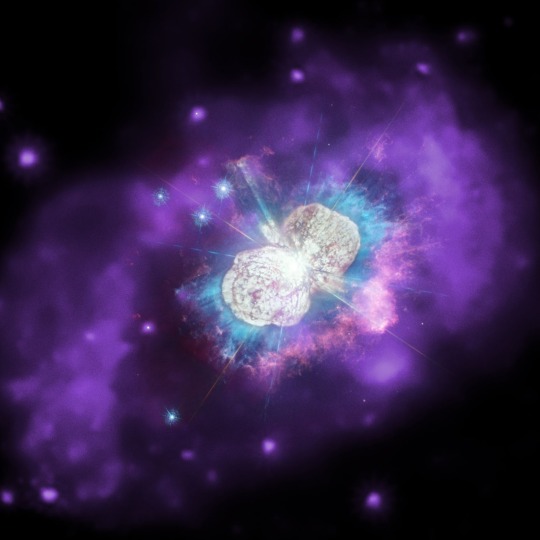
Eta Carinae: A Stellar Beauty
In the vast expense of our universe, where stars twinkle like celestial gems, there lies a dazzling beauty named Eta Carinae. Prepare to be captivated as I take you on a journey to discover the secrets of this cosmic wonder.
Eta Carinae, known lovingly as “Eta” by astronomers, is a stellar masterpiece in the Carina Nebula, approximately 7.500 light-years away from Earth. This stellar gem has captivated astronomers for centuries with its majestic presence and intriguing nature.
A Star Like No Other
Eta Carinae is not your ordinary star-it’s a binary star system consisting of two massive, luminous stars locked in an intricate cosmic dance. These stars Eta Carinae A and Eta Carinae B -creative names, I know- are classified as hypergiants, making them some of the most massive and brightest stars. (that we know of)
Historic Outbursts

Since then, Eta Carinae has experienced smaller-scale eruptions, displaying irregular brightness variations and releasing enormous amounts of energy.
Impending Supernova:
One of the most captivating aspects of Eta Carinae is the potential for a future supernova event. The massive star is nearing the end of its life, and astronomers anticipate that it will eventually explode in a spectacular supernova. When this cataclysmic event occurs, it is expected to release an immense amount of energy, briefly outshining its host galaxy. The timing of this explosion remains uncertain, adding to the intrigue and urgency of studying Eta Carinae.
Understanding the Phenomenon:
The erratic behavior and imminent explosion of Eta Carinae pose intriguing questions for scientists. Studying this stellar system provides valuable insights into the evolution and fate of massive stars. Astronomers employ various observational techniques, including spectroscopy, imaging, and monitoring of brightness fluctuations, to unravel the physical processes at play within Eta Carinae. By analyzing the data collected over decades, researchers hope to decipher the mechanisms driving its eruptions and better predict the timing of its impending supernova.
Implications for the Universe:
Eta Carinae's significance extends beyond its individuality. Massive stars like Eta Carinae play a pivotal role in shaping galaxies and enriching the cosmos with heavy elements. Supernova explosions from such stars distribute these elements throughout the universe, ultimately contributing to the formation of new stars, planets, and even life. Understanding the life cycle of massive stars through the study of objects like Eta Carinae enhances our knowledge of cosmic evolution on a grand scale.
14 notes
·
View notes
Text
IS QUASAR A BLACK HOLE??
Blog#289
Wednesday, April 19th, 2023
Welcome back,
A quasar is a supermassive black hole feeding on gas at the center of a distant galaxy.
Quasar is short for quasi-stellar radio source, because astronomers first discovered quasars in 1963 as objects that looked like stars but emitted radio waves.
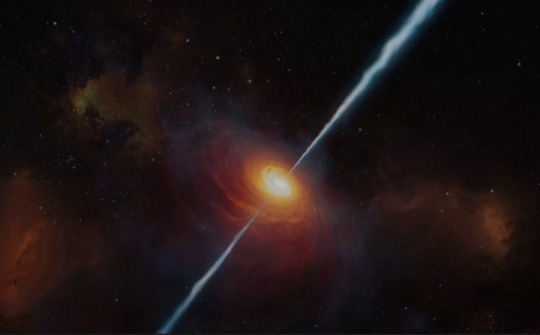
Now, the term is a catch-all for all feeding, and therefore luminous supermassive black holes, also often called active galactic nuclei.
It’s a bit of a contradiction to call a black hole luminous; black holes themselves are, of course, black. In fact, almost every large galaxy hosts a black hole with the mass of millions to billions of Suns, and many of these black holes lurk in the dark. Our Milky Way’s behemoth weighs in at 4.3 million solar masses, but its starvation diet mutes all but faint flashes and flickers.
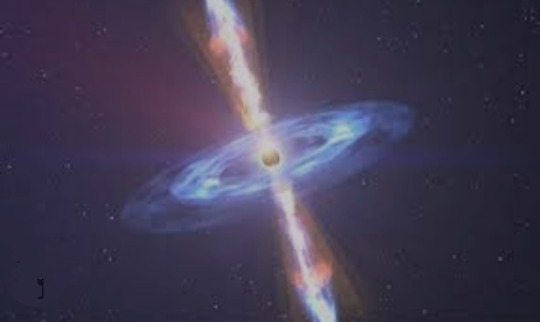
We know it’s there, though, from the orbits of stars around it. Other dormant black holes occasionally shred an infalling star, making their presence known by the flare of radiation that ensues.
But quasars are a different breed of black hole. They reside in galaxies with plentiful gas supplies, perhaps supplied by a recent galaxy-galaxy collision, and they gorge on the inflowing material.
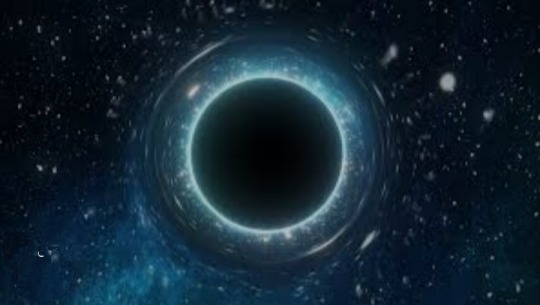
The gas spirals around as it falls in, heating up in the process and emitting radiation across the electromagnetic spectrum.
Supermassive black holes in nearby galaxies typically do not have that much gas available to them, so quasars are typically found in distant galaxies. The nearest quasar is Markarian 231, which lies about 600 million light-years from Earth.
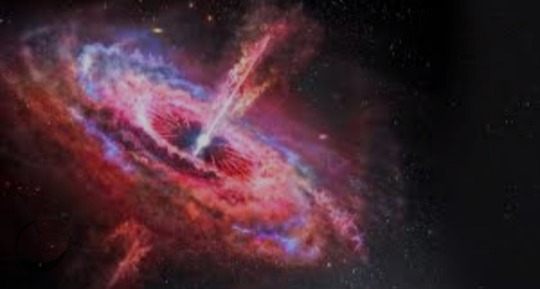
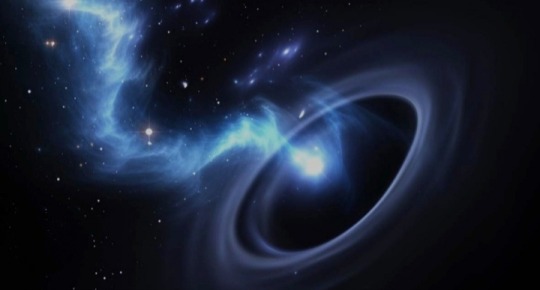
A quasar is not only the feeding black hole itself, but the light-producing structures that surround it. Visible and ultraviolet light come from the glowing disk of infalling material, while even hotter gas above the disk shines at X-ray energies. Jets shooting out along the black hole’s poles emit everything from radio waves to X-rays. Farther out from the black hole, the prolific dust and gas glow at infrared wavelengths.
The size of a quasar accretion disk, which scales with the mass of its black hole, is typically a few light-days across. That dwarfs in comparison to its host galaxy; the Milky Way for comparison is roughly 100,000 light-years across. Yet quasars often outshine their hosts.

Despite their brilliance, quasars are so small and distant that even the most powerful telescope cannot resolve all the structures within a quasar.
Astronomers have to ferret out the details using other techniques, such as analyzing spectroscopy (spreading out the light by wavelength) or light curves (spreading out the light by its arrival time).
While the details are still up for debate, we can use current knowledge to paint a general picture of a quasar. Just remember that this picture might change over time as we learn more!
Originally published on skyandtelescope.org
COMING UP!!
(Saturday, April 22nd, 2023)
"HOW LONG DO BLACK HOLES LAST??"
#astronomy#outer space#alternate universe#astrophysics#spacecraft#universe#white universe#space#parallel universe#astrophotography
85 notes
·
View notes
Text
The telescope showed the spectroscopy of the exoplanet WASP-96 b. They also showed dust of dying stars and stellar birth zones, the place where new stars form.
19 notes
·
View notes
Video
tumblr
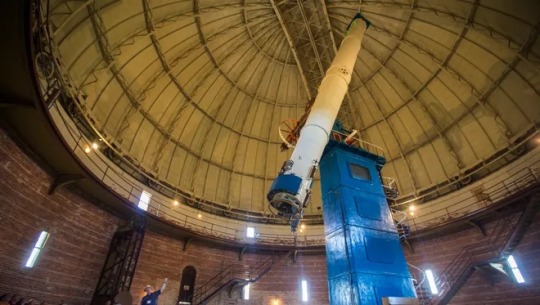
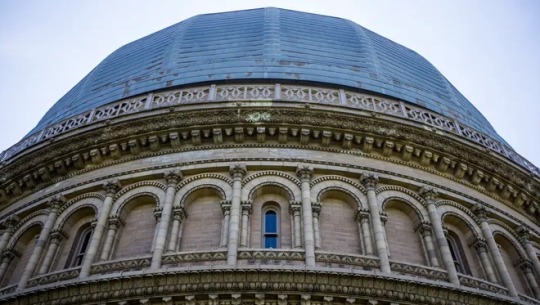

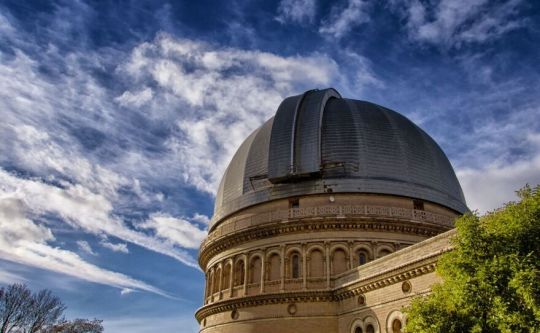

Yerkes Observatory
Yerkes Observatory, astronomical observatory located at Williams Bay on Lake Geneva in southeastern Wisconsin, U.S. The Yerkes Observatory of the University of Chicago was named for its benefactor, transportation magnate Charles T. Yerkes, and was opened in 1897. It contains the largest refracting telescope (40 inches [1 metre]) in the world. The refractor has been used for solar and stellar spectroscopy, photographic parallaxes, and double-star observations, while other more modern telescopes at the site have been equipped for photoelectric, polarimetric, and spectroscopic applications.
#Yerkes Observatory#astronomical observatory#telescope#the worlds largest refracting telescope#space#science#astronomy#astronomer
75 notes
·
View notes
Text

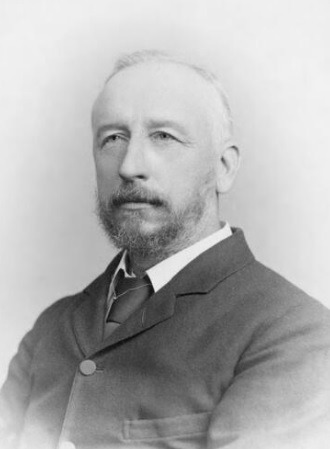
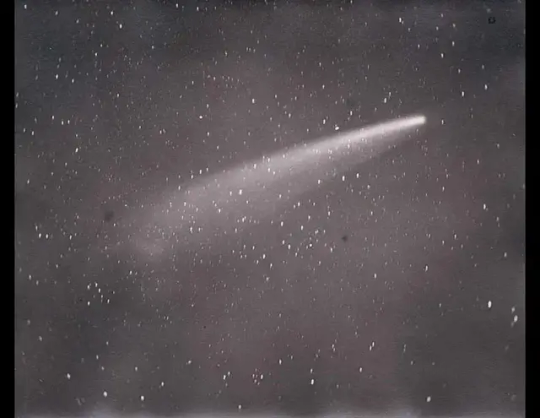
On 12th June 1843 Sir David Gill, Scottish astronomer, was born in Aberdeen.
At the age of fourteen he was sent to the Dollar Academy, where Dr. Lindsay's teaching imparted to him a fondness for mathematics, physics, and chemistry. He then proceeded to Marischal College and University, Aberdeen, where his love of science increased and developed under the inspiring influence of Clerk Maxwell. He would have liked a scientific career, but his father, a prosperous Aberdeen merchant, wished his son to succeed him. Gill consented with reluctance to enter his father's business, and consoled himself by devoting all his spare time to physics and chemistry, at least until his father's passing, after a few years he sold the business
Gill was noted for his measurements of solar and stellar parallaxes, which accurately revealed the distances of the Sun and other stars to Earth. He was also a pioneer in the use of photography to map the heavens.
His measurements to the sun were only a mind boggling 0.1% of today's calculations! He is quite simply the most important astronomer you've never heard.
David Gill’s contributions to astronomy made him one of the most successful astronomers of his era, a time covering the last quarter of the 19th century and into the 20th century. This was a time when astrometrics came of age, astrophotography began to transform astronomy, stellar spectroscopy became a technique that all professional observatories needed to embrace and international, multi-observatory projects were shown to be the way forward into the 20th century. David Gill played a seminal part in all these developments. His achievements were recognised in his lifetime both at home, and abroad but as happens with many who promote an era of change, it has been the achievements of those who succeeded him when the techniques matured who are better remembered. David Gill was much more.
Much more on Gill on the link below.
5 notes
·
View notes
Text

Margaret Lindsay, Lady Huggins (14 August 1848, in Dublin – 24 March 1915, in London), born Margaret Lindsay Murray, was an Irish-English scientific investigator and astronomer. With her husband William Huggins she was a pioneer in the field of spectroscopy and co-wrote the Atlas of Representative Stellar Spectra (1899).
#Margaret Lindsay Huggins#Margaret Lindsay Murray#women in history#women in science#xix century#xx century#photo#photography#black and white
3 notes
·
View notes
Text

@ExploreCosmos_: Rigel is the brightest star in the constellation of Orion and the seventh brightest star in the night sky. Its name originates from the Arabic word for "foot" or "leg," reflecting its position as the foot of Orion, the mighty hunter of Greek mythology. 2/ With a visual magnitude of about 0.13, Rigel shines fiercely, illuminating its surrounding cosmic neighborhood. Rigel belongs to the spectral class B8Ia, indicating that it is a massive, luminous star with a surface temperature of approximately 11,000 Kelvin. 3/It is estimated to be around 21 times the mass of the Sun and roughly 78 times its radius. Such immense proportions classify Rigel as a blue supergiant. Rigel's luminosity is staggering, with a brightness approximately 120,000 times that of the Sun. 4/Being a blue supergiant, Rigel burns through its nuclear fuel at a rapid pace. As a result, it has a relatively short lifespan compared to smaller, less luminous stars. Estimates suggest that Rigel is only a few million years old & is already nearing the end of its life cycle. 5/ Rigel does not exist in isolation; it is part of a larger stellar system that adds complexity and intrigue to its celestial narrative. Rigel has a companion star, Rigel B, which is often overlooked due to the brilliance of its primary counterpart. 6/Rigel B is itself a spectroscopic binary system, consisting of two stars orbiting around a common center of mass. These stars are likely smaller and less massive than Rigel A, contributing to the overall dynamics of the system. 7/ While no confirmed exoplanets have been discovered in the immediate vicinity of Rigel, astronomers continue to investigate the possibility of planetary companions around this massive star. The intense radiation and stellar winds emitted by Rigel pose challenges for the ... 8/ formation and stability of planetary systems. However, theoretical models suggest that distant gas giants or rocky worlds may orbit within the habitable zone of Rigel, albeit under extreme conditions. 9/Rigel's radiance also illuminates the surrounding interstellar medium, shaping intricate structures such as the Witch Head Nebula. This nebula, located approximately 900 light-years away, reflects the intense ultraviolet radiation emitted by Rigel, creating a ... 10/ stunning cosmic vista for observers on Earth. Rigel's prominence extends beyond its celestial beauty; it serves as a crucial object of study for astronomers seeking to unravel the mysteries of stellar evolution, nucleosynthesis, and the dynamics of stellar systems. 11/ As a blue supergiant approaching the later stages of its life, Rigel offers valuable insights into the fate of massive stars. Scientists observe its behavior to understand processes such as core fusion, mass loss, and eventual supernova explosions, ... 12/which enrich the cosmos with heavy elements essential for the formation of new stars & planetary systems. We employ a variety of observational techniques, including spectroscopy & photometry, to analyze Rigel's spectrum, luminosity variations & physical properties. These observations deepen our understanding of stellar atmospheres, interior structure, and evolutionary pathways, contributing to broader theories of stellar evolution and galactic dynamics. 14/ With advancements in astronomical instrumentation and space exploration technology, researchers anticipate further discoveries and insights into the Rigel system. Future missions may include detailed spectroscopic studies, direct imaging of potential exoplanets, ... 15/and enhanced simulations to model the complex interactions within this dynamic stellar environment. Rigel stands as a beacon of cosmic wonder, captivating observers with its brilliance and scientific significance.

2 notes
·
View notes
Text
Japanese X-Ray Satellite to Probe Universe's Largest Structures
A revolutionary satellite is preparing to take to the skies, viewing the hidden parts of cosmos in a new light to reveal stellar explosions and powerful jets streaming from supermassive black holes. First Full-Color Images From Webb Space Telescope XRISM (X-ray Imaging and Spectroscopy Mission), a joint mission between the Japan Aerospace Exploration Agency (JAXA) and NASA, is designed to…
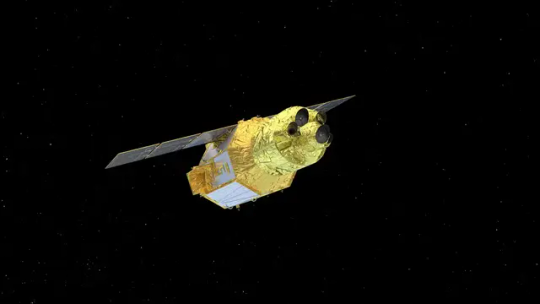
View On WordPress
#European Southern Observatory#Explorers Program#Gizmodo#In spaceflight#Internet#JAXA#Mihoko Yukita#NASA#Ray#Richard Kelley#Smart Lander for Investigating Moon#Space telescopes#Supermassive black hole#Technology#X-ray astronomy satellite#X-Ray Imaging and Spectroscopy Mission#X-ray telescopes
3 notes
·
View notes
Text

Astronomy is the scientific study of celestial objects, space, and the universe as a whole, aiming to understand their origins, behavior, and interactions. Here are some branches of Astronomy
Astrophysics: Examining the physical properties and behavior of celestial objects and phenomena.
Planetary Science: Investigating planets, moons, and other objects within our solar system.
Stellar Astronomy: Analyzing the life cycles, properties, and behavior of stars.
Galactic Astronomy: Studying the formation, dynamics, and evolution of galaxies.
Cosmology: Exploring the structure, origin, evolution, and fate of the universe.
Exoplanet Studies: Searching for and characterizing planets orbiting other stars.
Astrobiology: Investigating the potential for life beyond Earth in various environments.
Astrochemistry: Exploring the chemical compositions of space objects and interstellar matter.
Astrometry: Precise measurement of positions and motions of celestial bodies.
Radio Astronomy: Studying celestial objects using radio waves and radio telescopes.
Infrared Astronomy: Observing objects by detecting their infrared radiation.
Ultraviolet Astronomy: Examining space objects through their ultraviolet emissions.
Gamma-Ray Astronomy: Studying extremely energetic phenomena through gamma-ray emissions.
X-ray Astronomy: Investigating high-energy phenomena using X-ray observations.
Optical Astronomy: Exploring space through visible light observations.
Meteoritics: Analyzing meteorites to understand the early solar system.
Celestial Mechanics: Studying the motion and interactions of celestial bodies.
Space Weather: Monitoring and predicting space-based phenomena that affect Earth.
Solar Physics: Examining the behavior and properties of the Sun.
Gravitational Astronomy: Detecting gravitational waves to study cosmic events.
Astrodynamics: Calculating the trajectories of objects in space.
Dark Matter Research: Investigating the elusive matter that affects the cosmos.
High-Energy Astrophysics: Studying extremely energetic processes in the universe.
Neutron Star Studies: Analyzing the properties and behavior of neutron stars.
Black Hole Research: Investigating the nature and effects of black holes.
Stellar Evolution: Understanding the life stages and changes of stars.
Observational Astronomy: Collecting and interpreting data from observations.
Theoretical Astronomy: Developing models and theories to explain celestial phenomena.
Astrostatistics: Applying statistical methods to analyze astronomical data.
Astroinformatics: Developing and using computer tools for astronomical research.
Cosmic Microwave Background: Studying the afterglow of the Big Bang.
Meteor Astronomy: Observing meteors, meteor showers, and their origins.
Space Archaeology: Applying satellite imagery to discover ancient sites.
Astrocartography: Mapping celestial objects and phenomena.
Space Debris Research: Monitoring and mitigating human-made space debris.
Astrophotography: Capturing images of celestial objects and events.
Variable Star Observations: Monitoring stars that change in brightness.
Astronomical Spectroscopy: Analyzing the interaction of light with matter in space.
Astrogeology: Applying geological principles to study extraterrestrial surfaces.
Astronomical Surveys: Systematic observations of large portions of the sky to discover new phenomena.
2 notes
·
View notes
Text
James Webb Telescope Unveils Cosmic Seahorse and Gravitational Lensing
Webb Gravitational Lensing
NASA’s James Webb Space Telescope has captured a mesmerizing image that reveals a cosmic phenomenon known as gravitational lensing. In this captivating image, distant galaxies are magnified, distorted, and brightened due to the gravitational pull of a foreground galaxy cluster. Among the intriguing features highlighted in the image is a galaxy nicknamed the “Cosmic Seahorse,” presenting a long,…
View On WordPress
#Ariane 5 rocket#Cosmic Microwave Background#Deep space observations#Exoplanets#Fine Guidance Sensor/Near InfraRed Imager and Slitless Spectrograph (FGS/NIRISS)#Galaxy formation#Hubble Space Telescope successor#Infrared Astronomy#Infrared detectors#James Webb Space Telescope (JWST)#Launch#Mid-Infrared Instrument (MIRI)#Mirror segments#Multi-object spectroscopy#NASA#Near InfraRed Spectrograph (NIRSpec)#Near-Infrared Camera (NIRCam)#Space telescope#Stellar populations#Sunshield#Transiting exoplanets#Universe formation and evolution#Webb Science Operations Center (JSOC)
0 notes
Text

'Old' star could provide new insights into star evolution
A newly discovered star could challenge some models of how stars evolve and the way they produce elements as they age.
All the elements in the universe are formed within stars. As stars age, the composition of elements within them also changes. For example, it is widely accepted that as stars burn they lose lighter elements like lithium in exchange for heavier elements like carbon and oxygen.
But a new study, led by researchers at the University of Florida and including an NC State astronomer, examines a star that appears to be an exception. The study appears in The Astrophysical Journal.
This star, named J0524-0336, was discovered during a survey that looked for older stars in the Milky Way. It is an evolved star, meaning that it is in the later stages of its "life" and is beginning to grow unstable. That also means that it is much larger and brighter than most other stars of its type, estimated to be about 30 times the size of the sun.
The researchers used spectroscopy—which uses the wavelengths of light to measure the amounts of elements present in a star—and found an abundance of lithium in J0524-0336, which was unexpected in a star that old.
"When our team initially looked at the spectrum of this star in 2018, we thought there was an error in our data at the place where we would detect lithium," says Ian Roederer, associate professor of physics at NC State.
"But when I looked more carefully at the data in 2019, I thought that the original data might actually be correct, so I collected an additional spectrum of this star the following month and we confirmed that the signal was real.
"It was the strongest signal of lithium that I had ever seen in a star," Roederer says. "The amount of lithium in this star far exceeds that in any other known star."
The team came up with a few potential hypotheses to explain J0524-0336's high lithium content. It could be in an as-of-yet unobserved phase in the evolutionary cycle of stars, or it may have gained the element from a recent interaction with another celestial body.
Stars as old and as large as this one have been theorized to absorb nearby planets and neighboring stars as they age, so J0524-0336 may have simply picked up another lithium-rich body and hasn't yet fused the new matter.
Rana Ezzeddine, professor of astronomy at UF and study co-author, believes that with the amount of lithium found in J0524-0336, it is likely that there might have been contributions from both hypotheses, but more work is needed.
"If we find a build-up of dust in the star's circumstellar disk, or the ring of debris and materials being ejected from the star, this would clearly indicate a mass loss event, such as a stellar interaction," Ezzeddine says.
"If we don't observe such a disk, we could conclude that the lithium enrichment might be happening due to a process, still to be studied in detail, taking place inside the star instead."
7 notes
·
View notes
Text
UBV Wavelength Filters
The UBV system is one of the most widely used photometric systems in astronomy.

Developed by Harold Johnson and William Morgan in the 1950s, it categorizes light into three primary wavelength bands:
U (Ultraviolet)
Wavelength range: 300–400 nm
Sensitive to the ultraviolet part of the spectrum, capturing high-energy emissions.
Ideal for studying hot, young stars and regions with active star formation.
B (Blue)
Wavelength range: 400–500 nm
Focuses on blue light, helping identify intermediate-temperature stars.
Provides critical insights into the age and composition of stellar populations.
V (Visible)
Wavelength range: 500–600 nm
Covers the green-yellow part of the visible spectrum, where human eyes are most sensitive.
Commonly used for brightness measurements, making it a cornerstone for understanding stellar magnitudes.
How Do UBV Filters Work?
UBV filters are designed to allow only light from their specific wavelength range to pass through while blocking other wavelengths. When used in conjunction with sensitive detectors like CCD cameras or photomultipliers, these filters enable astronomers to record the intensity of light in each band separately.
By comparing the light captured in the U, B, and V bands, astronomers can deduce a star's color index—a key metric in determining its temperature, composition, and distance.
Applications in Astronomy
1. Determining Stellar Properties
UBV filters are indispensable for studying stars. The relative brightness in the U, B, and V bands helps classify stars on the Hertzsprung-Russell diagram, a vital tool for understanding stellar evolution.
Hot Stars: Emit more light in the U band.
Cool Stars: Emit more light in the V band.
2. Measuring Distances
The UBV system plays a crucial role in calculating the distances to celestial objects through techniques like photometric parallax and standard candles (e.g., Cepheid variables).
3. Identifying Star-Forming Regions
Young, hot stars and regions with high ultraviolet radiation stand out in the U band, making these filters essential for mapping star formation in galaxies.
4. Studying Galactic Evolution
By analyzing the light from galaxies in UBV bands, astronomers can estimate their age, star formation rate, and chemical composition, offering insights into their evolutionary history.
Did You Know?
The UBV system was the first widely adopted standardized photometric system, creating a universal framework for comparing observations from different telescopes.
The "U" band is particularly challenging to use because Earth's atmosphere absorbs much of the ultraviolet light, making space-based observatories like the Hubble Space Telescope essential for such studies.
UBV filters paved the way for more advanced photometric systems, such as the UBVRI system, which extends coverage into red and infrared wavelengths.
Importance in Modern Astronomy
Despite advancements in spectroscopy and multi-wavelength imaging, UBV filters remain a cornerstone of observational astronomy. They provide a cost-effective and straightforward method for characterizing celestial objects, especially in studies requiring broad-field surveys or long-term monitoring.
Conclusion
The UBV wavelength filters are a testament to the power of simplicity in unraveling the cosmos. By splitting light into just three bands, they enable astronomers to unlock the secrets of stars, galaxies, and the vast universe beyond.
Whether you're observing the twinkling of a nearby star or mapping a distant galaxy, the UBV system reminds us that even a small slice of the electromagnetic spectrum can reveal profound truths about the universe.
0 notes
Text
NASA JAXA XRISM Mission Looks Deeply Into Hidden Stellar System
The Japan-led XRISM (X-ray Imaging and Spectroscopy Mission) observatory has captured the most detailed portrait yet of gases flowing within Cygnus X-3, one of the most studied sources in the X-ray sky. Cygnus X-3 is a binary that pairs a rare type of high-mass star with a compact companion — likely a black hole. “The […] from NASA https://ift.tt/n4eSgsK
0 notes